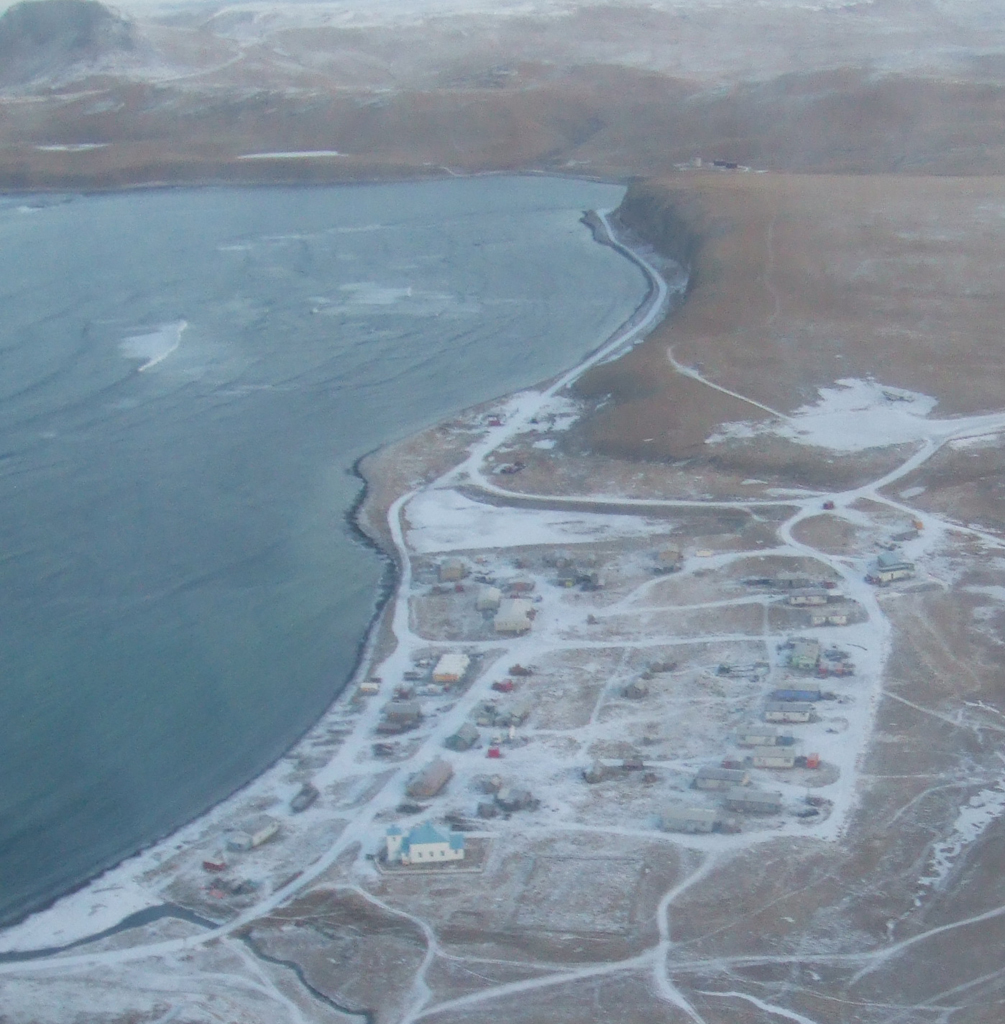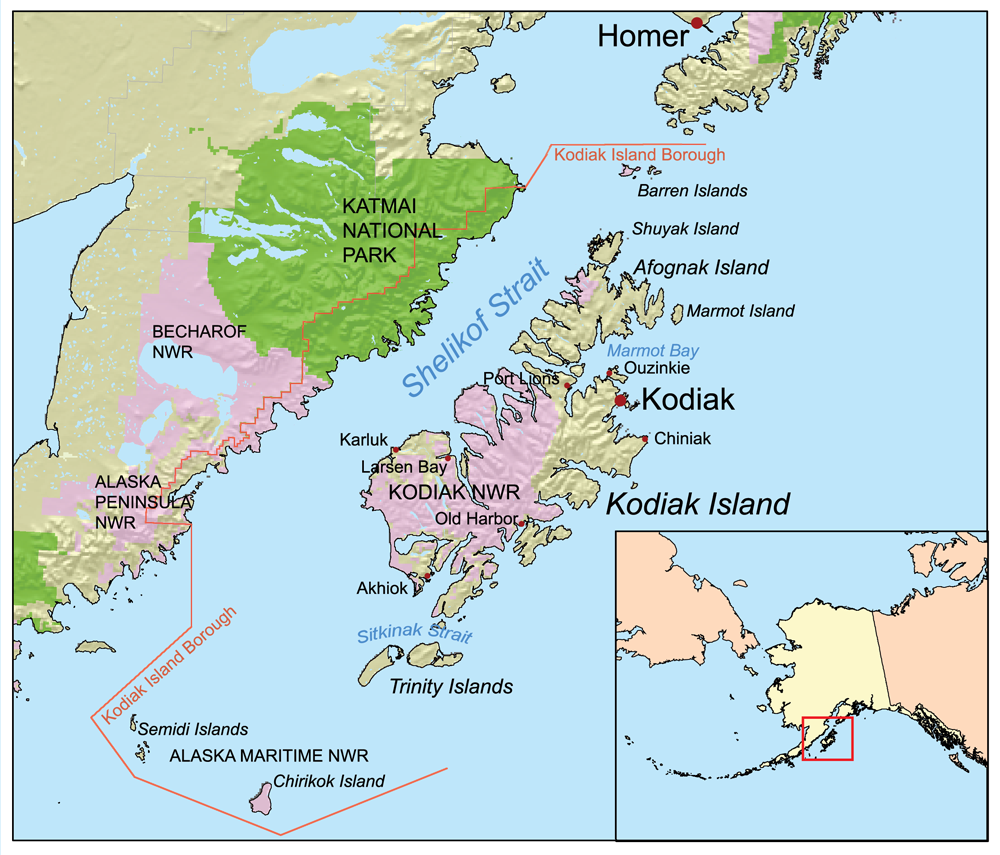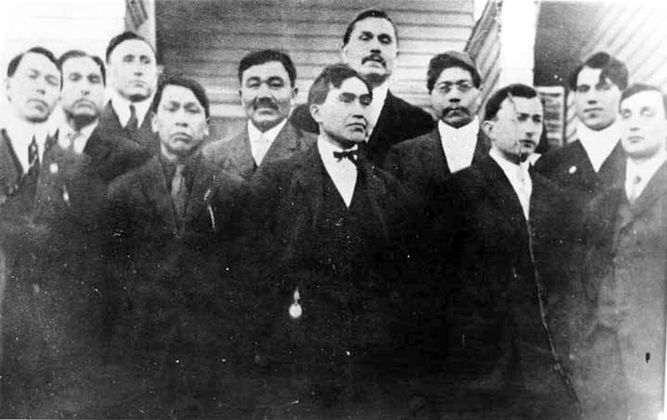|
List Of National Historic Landmarks In Alaska
The National Historic Landmarks in Alaska represent Alaska's history from its Russian heritage to its statehood. There are 50 National Historic Landmarks (NHLs) in the state. The United States National Historic Landmark program is operated under the auspices of the National Park Service, and recognizes structures, districts, objects, and similar resources according to a list of criteria of national significance. Major themes include Alaska's ancient cultures, Russian heritage, and role in World War II, but other stories are represented as well. In addition, two sites in Alaska were designated National Historic Landmarks, but the designation was later withdrawn. These sites appear in a separate table further below. The National Historic Landmark Program is administered by the National Park Service, a branch of the Department of the Interior. The National Park Service determines which properties meet NHL criteria and makes nomination recommendations after an owner notification p ... [...More Info...] [...Related Items...] OR: [Wikipedia] [Google] [Baidu] |
History Of Alaska
The history of Alaska dates back to the Upper Paleolithic period (around 14,000 Anno Domini, BC), when Hunter-gatherer, foraging groups crossed the Beringia, Bering land bridge into what is now western Alaska. At the time of European contact by the Russian colonization of the Americas, Russian explorers, the area was populated by Alaska Natives, Alaska Native groups. The name "Alaska" derives from the Aleut language, Aleut word ''Alaxsxaq'' (also spelled ''Alyeska''), meaning "mainland" (literally, "the object toward which the action of the sea is directed"). The U.S. purchased Alaska from Russia in 1867. In the 1890s, gold rushes in Alaska and the nearby Yukon, Yukon Territory brought thousands of miners and settlers to Alaska. Alaska was granted territorial status in 1912 by the United States of America. In 1942, two of the outer Aleutian Islands—Attu Island, Attu and Kiska—were occupied by the Japanese during World War II and their recovery for the U.S. became a matter of ... [...More Info...] [...Related Items...] OR: [Wikipedia] [Google] [Baidu] |
Kiska
Kiska ( ale, Qisxa, russian: Кыска) is one of the Rat Islands, a group of the Aleutian Islands of Alaska. It is about long and varies in width from . It is part of Aleutian Islands Wilderness and as such, special permission is required to visit it. The island has no permanent population. History European Discovery (1741) In 1741 while returning from his second voyage at sea during the Great Northern Expedition, Danish-born Russian explorer Vitus Bering made the first European discovery of most of the Aleutian Islands, including Kiska. Georg Wilhelm Steller, a naturalist-physician aboard Bering's ship, wrote: ''On 25 October 1741 we had very clear weather and sunshine, but even so it hailed at various times in the afternoon. We were surprised in the morning to discover a large tall island at 51° to the north of us.'' Prior to European contact, Kiska Island had been densely populated by native peoples for thousands of years. After Discovery (1741–1939) Kis ... [...More Info...] [...Related Items...] OR: [Wikipedia] [Google] [Baidu] |
Kayak Island
Kayak Island, (Eyak: ''Qe'yiłteh'') which includes the Bering Expedition Landing Site, is located in the Gulf of Alaska, SE of Cordova, Alaska Malaspina Coastal Plain, on the eastern edge of Chugach National Forest. It has a land area of and no population. A brief visit by the Bering Expedition's German naturalist George Steller is among the first contributions to the West's knowledge of the natural and human history of the region. The island was named "Kayak" in 1826 by Lt. Sarychev of the Russian Navy, because of the fancied resemblance of its outline to the Eskimo skin canoe. Captain James Cook visited the island on May 12, 1778, and buried a bottle with a paper and two small pieces of silver given to him by Dr. Richard Kaye, the chaplain of King George III, for this purpose. Because of this, Capt. Cook gave the name this feature. The 1779 expedition of Spanish explorer Ignacio de Arteaga y Bazán sighted the island about July 16, the feast day of Our Lady of Mt. C ... [...More Info...] [...Related Items...] OR: [Wikipedia] [Google] [Baidu] |
Nikolski, Alaska
Nikolski (''Chalukax̂'' in Aleut; russian: Никольский) is a census-designated place (CDP) on Umnak Island in Aleutians West Census Area, Alaska, United States. The population was 39 at the 2020 census, up from 18 in 2010. Nikolski is on Nikolski Bay, off the southwest end of the island. It is 116 air miles west of Unalaska, and 900 air miles from Anchorage. Residents are known as Unangan, and Aleut is spoken in most of the remaining homes. History The Aleutian Pribilof Islands Association reports that Nikolski is thought to be one of the oldest continuously-occupied communities in the world. Archaeological evidence from Ananiuliak Island, 5 km offshore in Nikolski Bay, dates human habitation to 8,500 years ago. A site known as Chaluka in Nikolski shows 4,000 years of virtually continuous occupation. Subsistence activities, sheep and cattle raising, and fishing are the main livelihoods and the latter has been traced back thousands of years by archaeologists, thro ... [...More Info...] [...Related Items...] OR: [Wikipedia] [Google] [Baidu] |
Kodiak Island Borough, Alaska
Kodiak Island Borough (russian: Остров Кадьяк) is a borough in the U.S. state of Alaska. At the 2020 census, the population was 13,101, down from 13,592 in 2010. The borough seat is Kodiak. Geography The borough has a total area of , of which is land and (45.5%) is water. Most of the land area belongs to Kodiak Island, but a thin strip of coastal area on the western part of the Alaska Peninsula and other nearby islands (Afognak Island, Shuyak Island, Marmot Island, Raspberry Island, Little Raspberry Island, Whale Island, Spruce Island, Woody Island, Uganik Island, Sitkalidak Island, Tugidak Island, Sitkinak Island, Chirikof Island, and the Semidi Islands) are also in the borough. The waterway between the island and mainland is known as the Shelikof Strait. South of the island are the open waters of the Pacific Ocean, so the site is considered good for launching certain types of satellites. The Kodiak Launch Complex is ideal for putting satellites i ... [...More Info...] [...Related Items...] OR: [Wikipedia] [Google] [Baidu] |
Katmai National Park And Preserve
Katmai National Park and Preserve is an American national park and preserve in southwest Alaska, notable for the Valley of Ten Thousand Smokes and for its brown bears. The park and preserve encompass , which is between the sizes of Connecticut and New Jersey. Most of the national park is a designated wilderness area. The park is named after Mount Katmai, its centerpiece stratovolcano. The park is located on the Alaska Peninsula, across from Kodiak Island, with headquarters in nearby King Salmon, about southwest of Anchorage. The area was first designated a national monument in 1918 to protect the area around the major 1912 volcanic eruption of Novarupta, which formed the Valley of Ten Thousand Smokes, a , pyroclastic flow. The park includes as many as 18 individual volcanoes, seven of which have been active since 1900. Initially designated because of its volcanic history, the monument was left undeveloped and largely unvisited until the 1950s. The monument and surrounding lands ... [...More Info...] [...Related Items...] OR: [Wikipedia] [Google] [Baidu] |
Indigenous Peoples
Indigenous peoples are culturally distinct ethnic groups whose members are directly descended from the earliest known inhabitants of a particular geographic region and, to some extent, maintain the language and culture of those original peoples. The term ''Indigenous'' was first, in its modern context, used by Europeans, who used it to differentiate the Indigenous peoples of the Americas from the European settlers of the Americas and from the Sub-Saharan Africans who were brought to the Americas as enslaved people. The term may have first been used in this context by Sir Thomas Browne in 1646, who stated "and although in many parts thereof there be at present swarms of ''Negroes'' serving under the ''Spaniard'', yet were they all transported from ''Africa'', since the discovery of ''Columbus''; and are not indigenous or proper natives of ''America''." Peoples are usually described as "Indigenous" when they maintain traditions or other aspects of an early culture that is assoc ... [...More Info...] [...Related Items...] OR: [Wikipedia] [Google] [Baidu] |
Discrimination
Discrimination is the act of making unjustified distinctions between people based on the groups, classes, or other categories to which they belong or are perceived to belong. People may be discriminated on the basis of race, gender, age, religion, disability, or sexual orientation, as well as other categories. Discrimination especially occurs when individuals or groups are unfairly treated in a way which is worse than other people are treated, on the basis of their actual or perceived membership in certain groups or social categories. It involves restricting members of one group from opportunities or privileges that are available to members of another group. Discriminatory traditions, policies, ideas, practices and laws exist in many countries and institutions in all parts of the world, including territories where discrimination is generally looked down upon. In some places, attempts such as quotas have been used to benefit those who are believed to be current or past victims ... [...More Info...] [...Related Items...] OR: [Wikipedia] [Google] [Baidu] |
Tlingit People
The Tlingit ( or ; also spelled Tlinkit) are indigenous peoples of the Pacific Northwest Coast of North America. Their language is the Tlingit language (natively , pronounced ),"Lingít Yoo X'atángi: The Tlingit Language." ''Sealaska Heritage Institute.'' (retrieved 3 December 2009) in which the name means 'People of the Tides'.Pritzker, 208 The Russian name ' (, from a Sugpiaq-Alutiiq term ' for the worn by women) or the related German name ' may be encountered referring to the people in older historical literature, such as |
Alaska Native Brotherhood
The Alaska Native Brotherhood (ANB) and its counterpart, the Alaska Native Sisterhood (ANS), are two nonprofit organizations founded to address racism against Alaska Native peoples in Alaska. ANB was formed in 1912 and ANS founded three years later. For the first half of the 20th century, they were the only organizations working for the civil rights of Alaska Natives in the territory and state. History Thirteen Alaska Natives who attended Sheldon Jackson Training School came together in 1912 to form the Alaska Native Brotherhood (ANB). The founders were George Fields, William Hobson, James C. Jackson, Eli Kalanvok, Seward Kunz, Paul Liberty, Frank Mercer, Marie Moon Orsen, Frank Price, James Watson, Chester Worthington, and Ralph Young. Peter Simpson (Tsimshian) was the first president of the group and is often known as the "father of the ANB." The original members wanted Alaska Natives to be able to access education and improve their standing in the community. Alaska was a seg ... [...More Info...] [...Related Items...] OR: [Wikipedia] [Google] [Baidu] |
Headquarters
Headquarters (commonly referred to as HQ) denotes the location where most, if not all, of the important functions of an organization are coordinated. In the United States, the corporate headquarters represents the entity at the center or the top of a corporation taking full responsibility for managing all business activities. In the United Kingdom, the term head office (or HO) is most commonly used for the headquarters of large corporations. The term is also used regarding military organizations. Corporate A headquarters is the entity at the top of a corporation that takes full responsibility for the overall success of the corporation, and ensures corporate governance. The corporate headquarters is a key element of a corporate structure and covers different corporate functions such as strategic planning, corporate communications, tax, legal, marketing, finance, human resources, information technology, and procurement. This entity includes the chief executive officer (CEO) ... [...More Info...] [...Related Items...] OR: [Wikipedia] [Google] [Baidu] |
Meeting Hall
In architecture, a hall is a relatively large space enclosed by a roof and walls. In the Iron Age and early Middle Ages in northern Europe, a mead hall was where a lord and his retainers ate and also slept. Later in the Middle Ages, the great hall was the largest room in castles and large houses, and where the servants usually slept. As more complex house plans developed, the hall remained a large room for dancing and large feasts, often still with servants sleeping there. It was usually immediately inside the main door. In modern British houses, an entrance hall next to the front door remains an indispensable feature, even if it is essentially merely a corridor. Today, the (entrance) hall of a house is the space next to the front door or vestibule leading to the rooms directly and/or indirectly. Where the hall inside the front door of a house is elongated, it may be called a passage, corridor (from Spanish ''corredor'' used in El Escorial and 100 years later in Castle How ... [...More Info...] [...Related Items...] OR: [Wikipedia] [Google] [Baidu] |









